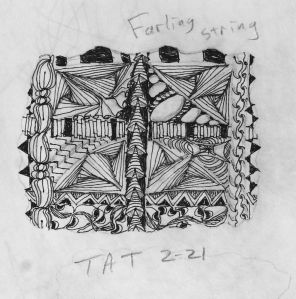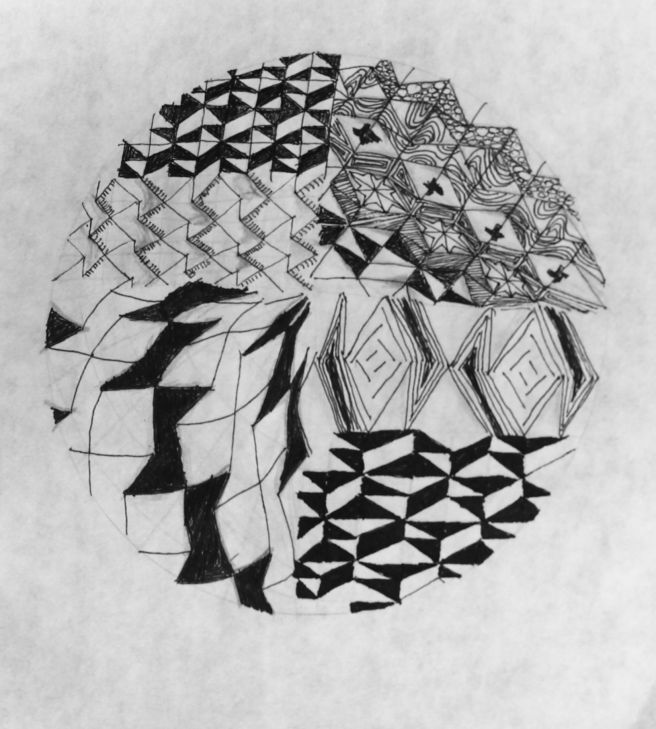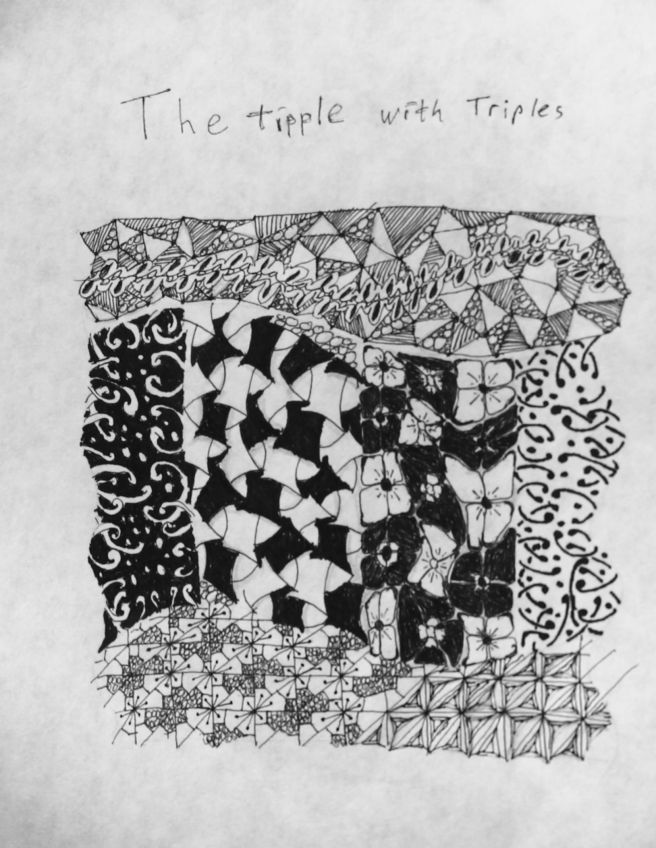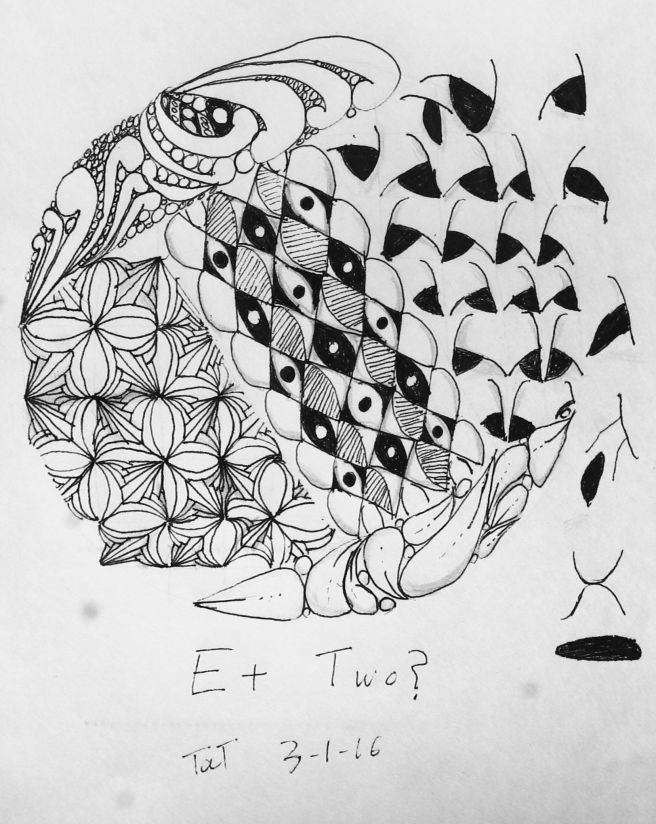Part of a continuing personal challenge; see the previous entries here, here, and here
12. ᛄ Ger [j], “year, harvest”
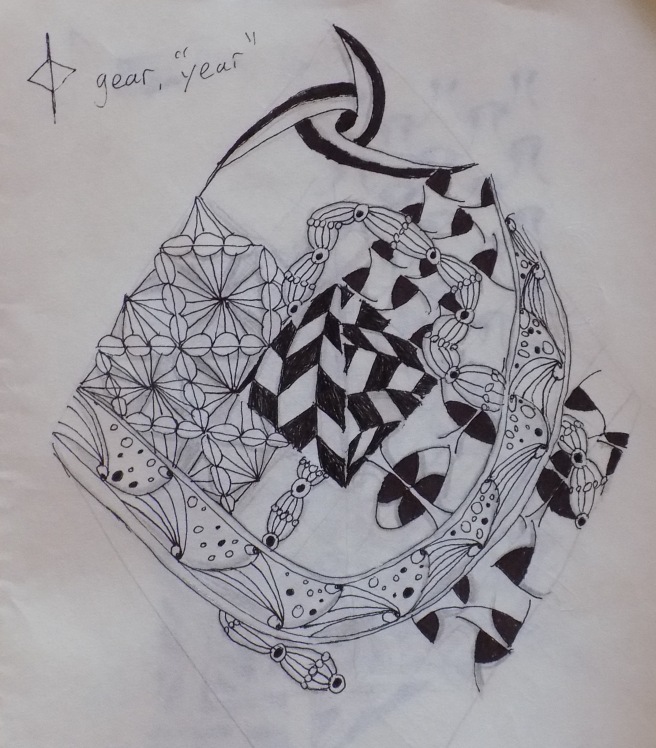
I admit I’m cheating on this one a bit phonetically. The “ger” rune represents the sound [j], represented in English by the consonant “y.” But there isn’t a “j” rune, or at least not one representing the “j” sound [dʒ]. The sound itself is relatively common in Old English, but it is typically represented with the combination “cg.” Interestingly, many of the words containing this cluster have survived into modern English basically unchanged other than in spelling, with “dge” taking the place of “cg” — ecg/edge, ricg/ridge, hecg/hedge. In the Anglo-Saxon alphabet, “g” was usually used to represent [j], although it also could be the same “g” we use now as well as a horrible voiced velar spirant which I have mentioned previously and that fortunately evolved into a “w”, which is why we say “own” and not “o[horrible Gollum-like sound]n.”
TL;DR, there are a lot of good “J” tangles and it’s my challenge so I get to do what I want.
Tangles used:
Jajazz
Jessicup
Jesterz
JJ
Jonqal
Jujubeedze It’s funny how the little beads in this ended up making eyeballs for weird little faces in the Jajazz…
13. ᛇ Eoh [eo], “Yew”
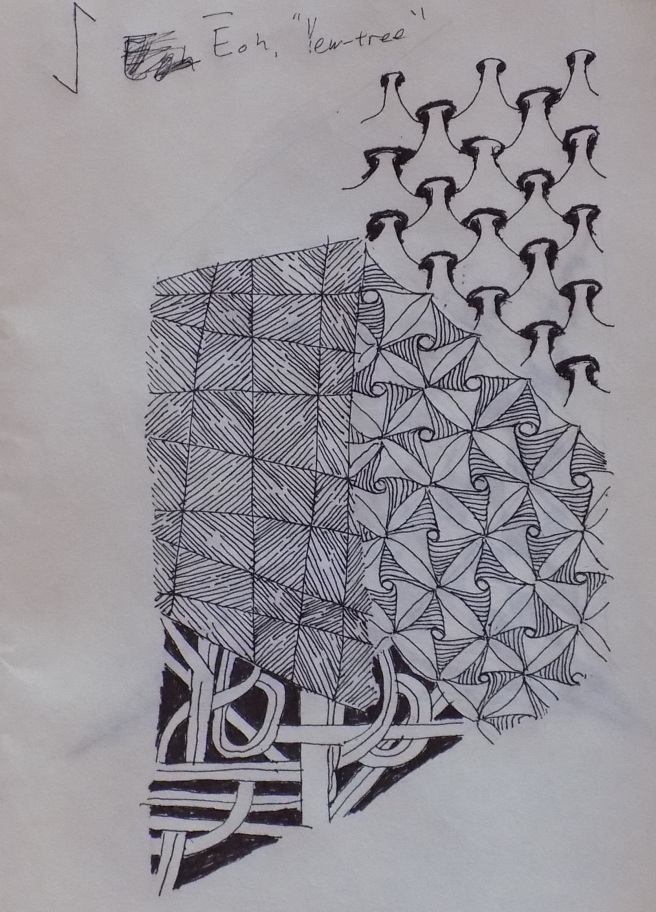
This is a bad picture and I realize now that the ZIA itself isn’t really complete — I should have shaded it. Oh well, I can always update it later.
There should really be a line over the “E” in “eoh” here, since it’s a long e — that’s long in quantity, not quality: think of the difference in the vowel of “mate” (short) and “made” (long). This is important since there is also an “eoh” rune with a short “e.” Confused? Well, you’re not alone. The original Germanic rune from which this is descended is “Eihwaz,” and if that sounds familiar, maybe you’ve read Harry Potter and the Order of the Phoenix:
I mistranslated ‘ehwaz,’” said Hermione furiously. “It means ‘partnership,’ not ‘defense,’ I mixed it up with ‘eihwaz.’
In this case it means “Yew,” not partnership or defense. And it represents the diphthong “eo,” the vowel in the first syllable of “Beowulf” as well as “mayonnaise” depending on how you pronounce it (I’ve always pronounced it “MAN-aze” or “MAY-oh” though really I try to avoid pronouncing it at all since I detest the stuff.) Regardless, there aren’t any “Eo” tangles that I know of, and since there is an “E” rune that I’ll be posting eventually, I went with “Y” as in “yew” as in the letter I should have used for “ger.”
Tangles yew-sed (see what I did there?)
Y-Ful Power
Yah
Yew Dee which is just a great grid tangle. There are a lot of ways you can vary it, too, and I’ve used the grid seed as a string. I might do a monotangle of it at some point.
Yincut The grid’s kind of wonky on this, but I like it.
14. ᛈ Peorth [p], meaning unknown
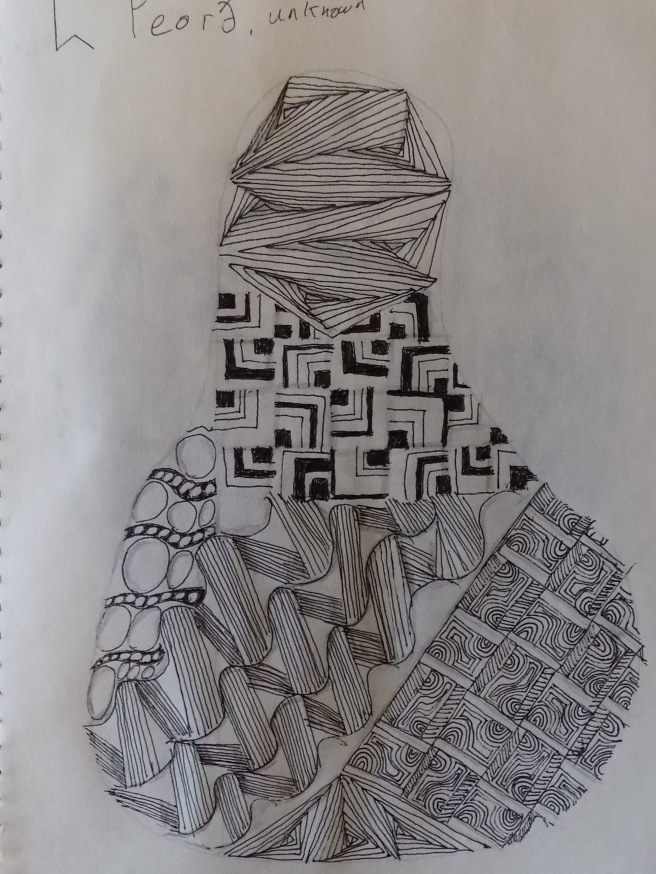
The name of this rune is “peorth” which is not, so far as anyone can tell, a word in Old English. Per Wikipedia:
The name is not comprehensible from Old English, i.e. no word similar to peorð is known in this language. According to a 9th-century manuscript of Alcuin (Codex Vindobonensis 795), written in Britain, in the Gothic alphabet, the letters
p (based on a Greek Π) and
q (an inverted Π) are called “pairþra” and “qairþra”, respectively. One of these names clearly is derived from the other. However, the names are not comprehensible in Gothic either, and it is not clear which is derived from which, except that we know that the Elder Futhark had a p, but no q rune. In any case, it seems evident that peorð is related to pairþra. The Anglo-Saxonfuthorc adopted exactly the same approach for the addition of a labiovelar rune, ᛢcweorð, in both shape and name based on peorð, but unfortunately, we do not know if the Gothic runes already had a similar variant rune of p, or if the labiovelar letter was a 4th-century creation of Ulfilas.
So it appears that what we have here is rune representing an unknown word in a dead West Germanic language that may or may not have been derived from a rune representing an unknown word in a dead East Germanic language, both of which had similarly unknown variants. Good times! Really, a “p” rune” wouldn’t have been all that useful to the Anglo-Saxons, as the sound “p” was fairly uncommon and rarely if ever appeared at the beginning of the word. One possible meaning is “pear.” I like pears, and I can draw a pear shape, so that influenced my framing of this.
Tangles used:
Palrevo: It took me a long time to figure this one out, both its design and its name, which Linda Farmer insists is so funny (by the way, you should hear my kids say “so funny!” It’s so… uh, humorous). It wasn’t until I put the clues together that I realized what was so special about the name and the pattern both. I don’t want to spoil it though…
Pand: This is another wonderfully versatile grid patterns. If you haven’t used it, you really should.
Paradox or should I say Pear-adox? No I shouldn’t. This is absolutely my favorite tangle ever. What I love is how it can make the original frame you put it in disappear completely. My only problem is that I like to alternate clockwise/counterclockwise Paradox shapes, only I forget which way I went last. The last time I did this, I actually drew faint arrows in each shape to remind me of which way I’d be going.
Pea-nuckle My dad taught me how to play Pinochle when I was a kid, but it’s been so long ago that I have no clue how to play it now. I mostly remember that it used a weird deck (two of each face card, I think, and no cards below nine?) and that he told me he used to play it with friends in the Baptist Student Union building (yes, there are Baptists who play cards. I was raised Baptist and it was there that I learned to play Spades) and that passersby who tried to follow what they were playing would be hopelessly confused.
That has nothing to do with this tangle other than the name. It’s a good pattern.
Purk
That’s enough for now; I’ll post more later.
